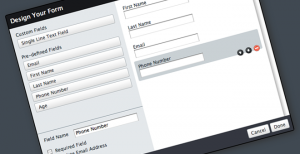Why Businesses Need Lead Grading and Lead Scoring
 Every lead that comes in contact with a given website has the potential to be converted into a sale at some point or another. In fact, 98% of all website visitors never submit a form, which means they could go completely undetected. That is why marketing automation has become so vital to the success of modern marketing campaigns. Marketing automation captures these potential leads for further marketing and nurturing that is more customized to the individual lead. Let’s have a look at why businesses need lead grading and lead scoring.
Every lead that comes in contact with a given website has the potential to be converted into a sale at some point or another. In fact, 98% of all website visitors never submit a form, which means they could go completely undetected. That is why marketing automation has become so vital to the success of modern marketing campaigns. Marketing automation captures these potential leads for further marketing and nurturing that is more customized to the individual lead. Let’s have a look at why businesses need lead grading and lead scoring.
Marketing Automation Needs to Prioritize Leads
Lead grading and lead scoring are vital to any marketing organization. Marketing automation brings in an abundance of leads, however, today’s marketing departments still need to solve the problem of determining a lead’s potential and how long it will take before a lead is ready for sales. The sales department does not have time to pursue every individual who comes in contact with a related website. Lead grading and lead scoring prioritize each lead making the entire process more efficient. It also assists the marketing department in making their content more relevant to each unique lead. That is exactly why businesses need lead grading and lead scoring.
Lead Scoring
Scoring specifically refers to the interest level of the individual lead. A lead score may be calculated based on a number of parameters such as email clicks, web form submissions, number of visits, page views, clicks on links, and file downloads. The more someone clicks on your emails and visits your site, the more interested they probably are in your products or services. Unfortunately their level of interest doesn’t always mean they are a good fit for your business. That is where grading becomes necessary.
Lead Grading
Grades are based on explicit factors such as industry, company size, budget, or job title. Where lead scoring dives into their behavior and interests, grading explores a prospect’s demographic profile. Leads are ranked based on how close the prospect is to a predetermined ideal customer profile. Matching demographics is not a guarantee for sales, but it does improve the likelihood.
The Need for Both
Judging a lead based only on their demographic profile won’t work well on its own, since it doesn’t indicate their interest in a product or service. That is why it takes a combination of both to generate more sales-ready leads. Lead score must access their behavioral attributes based on their activity, while lead grading cross-references their potential compared to predetermined demographic characteristics.
Lead grading and scoring work together to give you an in depth look into a prospect’s likelihood of becoming a sale. This powerful combination is the most effective way to qualify and prioritize leads for marketing automation. Once leads have been graded and scored, the chance of conversion will be significantly higher.
Lead Liaison is one of the few companies in the industry that provides a professional and easy to use implementation of both lead grading and lead scoring. Let us know if you’d like to learn more!











